Hello, we are Gen-Z Research Team, a “Generation Z behavioral data” analysis lab run by Generation Z members!
Using consumer behavioral data, we analyze the “reality of Generation Z” from the perspective of current employees who are part of Generation Z. In this article, Toritori, a current university student (born in 2001 and loves cafés), also participated in the analysis and wrote this article.

In this 13th installment, we welcomed members of the Gen-Z Research Team as well as members of the editorial department at Sucle, a social media medium for young women, to analyze trends in 2023.
"Sucle," who we are collaborating with for this discussion, is a social media medium for Generation Z girls from FinT Inc., which provides strategy design and supports implementation surrounding social media marketing. Based on the concept of “Today's Me, Dear Me (きょうのわたし、愛しいわたし),” they post content on Instagram, TikTok, X (Twitter), and YouTube, and have a total of 1 million followers across social media.
Who is “Gen Z”?
“Generation Z (“Gen Z” for short)” refers to the generation born from the late 1990s to around 2010. Because ever since they can remember, there was the Internet, and they are also known as a generation of “digital natives” and are attracting attention as the generation that will be central to supporting the economy in the near future.
On the other hand, in this article we will be comparing Generation Z to the “millennials,” which is the generation before them. This generation was born between 1981 and the mid-1990s and grew up along with the development of the Internet.
*In this article, we define consumer panel members ages 16 to 26 (as of December 2023) as Generation Z and members ages 27 to 41 (as of December 2023) as millennials.
What are Gen Z and millennials interested in?
Here is the ranking of search words that trended from January to November 2023 by generation.

Ranking of search words that trended among Generation Z and millennials
Rankings are created in descending order based on the number of people searching for each keyword compared to the previous year.
Keywords ranked as "NEW" are keywords that were searched by 0 consumer panel participants during the same period the previous year.
Period: January - November 2023 (year-on-year comparison with January to November 2022)
Device: Smartphone
Target: Consumer panel participants that were ages 16-26 (Gen Z) and 27-41 (millennials) as of December 2023

Marron: Among Gen Z, keywords related to offline events such as "summer festival," "Golden Week" (a time of consecutive national holidays in Japan from the end of April into May) and "fireworks festival" are often ranked. It was also an active year for me, traveling and visiting art exhibitions.

Toritori: This year, with the COVID-19 pandemic coming to an end, there have been many opportunities to go out, and I have the impression that both myself and my friends of the same generation enjoyed offline events.

Sucle Editorial Dept.: On Sucle's social media account, we also introduce offline events such as fireworks, as well as “photo ideas,” “how to spend your time,” and “ways to enjoy” for events, and the response to such posts has been particularly significant.

Marron: I see! Gen Z may be embodying their own individuality through their everyday outings and consumption behavior.

Toritori: "Chat GPT" and "MBTI assessment" also ranked among both generations. In addition to personality tests, the popularity of skeletal structure diagnosis and personal color analysis have continued into this year.

Marron: With the popularity of assessments, one possible trend among Gen Z is a tendency to ask, "What is best for me?" This trend among Gen Z reflects their desire to make choices that are suitable for them and are reliable, rather than making choices based on recommendations made to the masses.

Manaty: That's certainly true. When buying sunscreen, etc., I often watch thorough comparison videos posted on TikTok or YouTube and try to choose a product that will more likely give me the effect I'm looking for.

Sucle Editorial Dept.: Sucle Editorial Dept.: In 2023, it has been easier to go on outings than the previous year, so offline events such as fireworks, summer festivals, and participatory and empathy-driven exhibitions like the “IIHITO SUGIRUYO” exhibit*1 were common. There were many posts on social media about the places people have been to and how they had fun in their own way. On Instagram, posts about creative and art experiences were also popular, and the movement to communicate “individuality” on social media was apparent. In this way, content that allows people to express their individuality is attracting particular attention in 2023, and we believe that it was the year of #self-promotion. To celebrate reaching 1 million followers, Sucle looked back at the changes in Gen Z trends over the past six years. We are also looking back at trends from 2018 to 2022, so please take a look.
*1 “IIHITO SUGIRUYO” literally means “They are too nice of a person,” and the “IIHITO SUGIRUYO” exhibit displays a collection of situations where people have felt someone was “too nice of a person.”

Material created by Sucle translated by VALUES

Toritori: There have been three key points in 2023. With the increase in opportunities to go out, there have been many “offline events,” popular “creative experiences” related to expressing and sharing one's individuality, and “mutual understanding” through MBTI assessments and social media such as Instagram and BeReal. In this discussion, let’s focus on these three points: "offline events,” "creative experiences," and "mutual understanding," and unravel the trend surrounding "#self-promotion" among Gen Z in 2023!
Trend #1: Offline events
Material created by Sucle translated by VALUES
■The special feeling of “limited” periods and seasons captures the hearts of Gen Z

Sucle Editorial Dept.: Many Gen Z women seem to be looking for offline events that have a “special” factor being that they are only available for a limited time. In addition to “regular things” that you can enjoy at anytime, such as movies, shopping, and amusement parks, there seems to be a tendency for people to prefer “things that can only be enjoyed right now.”

Marron: The Gen-Z Research Team recognizes that Gen Z, who have a high interest and participation rate in seasonal events such as Christmas and fireworks, tend to prefer “consuming seasonal things.” In fact, if you refer to the chart below that shows Gen Z's interests in offline events, you will find that they are highly interested in seasonal events such as “fireworks displays,” “summer festivals,” “Valentine's Day,” “Halloween,” and they are thinking of ways to enjoy their “Golden Week” and “summer vacation. ”

Interest map for “offline events”
Period/Target: January - November 2023, Generation Z
Device: Smartphone

Manaty: I have the impression that my friends around me also often participate in seasonal events that offer “unique experiences.” I participated in the fireworks festival at Meiji Shrine, and there was also an open-air convenience store selling chilled cucumbers (a common snack at summer festivals) and ramune (sweet carbonated drink), which was great because it felt like a summer festival.

Toritori: I went to fireworks festivals twice with the idea that the COVID-19 pandemic has finally ended, and I enjoyed barbecue and lit hand-held fireworks to enjoy the summer to the fullest! At the fireworks festival, people were able to enjoy their time in their own way, such as wearing yukata (casual kimono) and eating and drinking from food stalls.

Sucle Editorial Dept.: The video Sucle posted on social media called “How to Enjoy the Christmas Market” was viewed 3.5 million times and received a particularly great response. Gen Z may not only want to go to seasonal events but also want to express their individuality and uniqueness when it comes to how they enjoy these seasonal events.
■Exhibits that offer a “shared experience” and “photo-worthiness”

Sucle Editorial Dept.: In addition to seasonal exhibitions, limited-time exhibitions such as the “IIHITO SUGIRUYO” and “MINNA DONNA KANJI?” exhibits have become popular. Participatory exhibits seem to be popular, such as those that offer shared experiences where people are provided the opportunity to compare their own values and experience feelings of empathy, and participatory exhibits where you can take part in completing a photo.

Manaty: I also went to the “IIHITO SUGIRUYO” exhibit, and it was an exhibit where I could find ways to relate to, and throughout the exhibit, I was like, “I get it! I understand!” The “Yadana” exhibit also went viral on social media.

Toritori: Speaking of participatory exhibits, I went to the “Friday Road Show and Ghibli” exhibit and the “Immersive Museum.” There are photo spots where you can become part of Ghibli movie posters and Impressionist paintings, and it's not only fun to be immersed in the world view but also great for photos to post on social media.

Participatory exhibits

Marron: All the exhibits look interesting. Exhibitions like this give you the feeling that you’re “having a special experience that can only be experienced that day,” and it's great that it's kind of a fun activity that is different than going to a store or theme park that's open all year round.
■Generation Z seeks “novelty” and “individuality” through participatory exhibits

Marron: What made you want to go to such a participatory exhibit?

Toritori: I think Instagram and TikTok are influential, such as seeing friends' Instagram Stories and short-form videos and posts on the feed created by organizers and visitors. In any case, what is the reason behind the popularity of participatory exhibits among Gen Z?

Sucle Editorial Dept.: The reason behind the popularity of participatory exhibits seems to be that people have grown tired of routine things as they pursue their own “individuality.”

Manaty: It's true that these days, people want to share their experiences on social media, which is why people want to have new and unique experiences.

Marron: Another possible reason is that we have been stuck at home for a long time due to the COVID-19 pandemic, so it may be that we have accumulated an urge to "experience the extraordinary," "feel with all five senses," and "want to have an exciting experience."

Sucle Editorial Dept.: Until two years ago, we, at Sucle, have been sharing ways to make the most of your time at home, but this year we are sharing information on places to go and how to enjoy them. The number of people going to exhibits that can be enjoyed alone, such as at museums, has increased since the COVID-19 pandemic, but it may be that the participatory exhibits that have become popular this year are following that trend and are an opportunity to have a shared experience with someone and deepen relationships.

Manaty: It's true that when you invite someone to see an exhibit, you can rest assured that they'll be able to talk to you once they find it interesting, and you can deepen your relationships with your friends by seeing the exhibit and sharing your impressions with each other.
Trend #2: Creative experiences
Material created by Sucle translated by VALUES
■As self-expression and mutual understanding

Sucle Editorial Dept.: Through the process of shared experiences, you can express yourself and deepen your relationships with the people you go with. What resonates with Gen Z is the “creative experience.” This year, activities like rug tufting were popular, and you can express yourself and deepen mutual understanding by learning how others express themselves through the various choices and decisions made during the creative process, and by spending hours together and talking with them.

Marron: Creative experiences give you an opportunity to directly see and learn about other people's ways of thinking and values, which you can't see just by going out to eat together.

Sucle Editorial Dept.: Another point is that you don't have to worry about topics to talk about during the creative experience, and you can have matching things once the experience is over. You can enjoy food as well as art, so even if you aren't really close friends, you can still have fun and deepen your friendships.

Toritori: That's true. Making matching rings is also a favorite among Gen Z.

Sucle Editorial Dept.: Making matching rings has been a popular activity even before the pandemic. What all popular creative experiences have in common is that they allow you to express your individuality while also allowing you to create something that has a certain level of completion, in other words, “not likely to fail.” I think Gen Z is seeking experiences where they can strike a balance between “wanting to express their originality'' and “not wanting to fail.”

Toritori: It's true that if you go to a store where you can try your hand at making things, the staff will be there to supervise, so you can express yourself through craft without the fear of failure.

Sucle Editorial Dept.: Right. In terms of art experiences, creative experiences such as one where you “mix your favorite colors of paint and pour it onto a disk or bear-shaped doll to create a marble pattern” are also popular. Although the process is simple and there is no way to fail, I think the secret to its popularity is that it allows for your own unique expression.

Marron: I see. The creative experience is where you can mutually understand your uniqueness and the uniqueness of others, and you can also satisfy your desire for a special experience by making full use of your five senses.

Sucle Editorial Dept.: Even if we try to understand each other, we would be at a loss if we were left without anything, so perhaps we are trying to deepen our relationship by getting to know each other's hobbies and preferences through creative experiences.
■As “Oshikatsu”
Note:
The term “Oshi” refers to one’s “favorite” of something or someone, such as idols, fictional characters, athletes, or objects.
The term “Oshikatsu” refers to activities in support of one’s “Oshi.”

Sucle Editorial Dept.: In addition to official merchandise, creating your own goods through creative experiences is becoming popular among Gen Z. There are kits that allow you to make your favorite small stuffed animals, and the official website also has kits that allow you to handmake the clothes for the small stuffed animal to wear, and there are such ways to practice “Oshikatsu.”

Toritori: It seems important to create goods that are unique to you, in the sense that it deepens your love for your “Oshi.” A friend of mine also displays their “Oshi” trading cards in a case decorated with ribbons and stones in the theme colors of their “Oshi” in their room, and they say, “By spending time and money on my ‘Oshi,’ I have more memories with ‘Oshi.’''

Marron: Especially when it comes to goods related to an “Oshi,” you feel like you want to express your love in “your own way.”

Sucle Editorial Dept.: Even though the trading cards themselves are the same, I guess they want the cases to be unique. Recently, the creative experience of making your favorite name tag is also popular.

Toritori: Oh, I see. When it comes to “Oshi”-related creative experiences, the shared topics are very clear, so it seems like the bonds between fans will deepen.
Trend #3: Tools for mutual understanding
Material created by Sucle translated by VALUES

Sucle Editorial Dept.: This year, the “MBTI assessment” and “BeReal.” have become popular as tools for both understanding oneself and others. I believe this is because, as the pandemic ended and opportunities for face-to-face communication have increased, people have started disclosing their personalities and personal lives to each other in search of "communication that never fails." The reason behind this may be that in order to avoid failures in communication when you actually meet the people you usually talk to via text on LINE or Instagram, you want to understand yourself and the other person as a prerequisite.

Toritori: Nowadays, we often meet online and then meet face-to-face, so I, personally, feel that “I want to get to know myself and the other person before meeting,” and “I don't want them to be disappointed when I meet them, so I am going to show them the real me from the start.''

Marron: In the diagram below, which shows Gen Z's interests related to “understanding oneself and others," there are many words related to personality, such as “HSP," with a focus on words related to the “MBTI assessment.” The Gen-Z Research Team believes that it has become a natural value among Gen Z to use assessments as a tool for understanding themselves and others.

Interest map for “understanding oneself and others”
Period/Target: January - November 2023, Generation Z
Device: Smartphone
■Words that indicate personality: “MBTI” and “HSP”

Toritori: First, let's consider the MBTI assessment, which has become very popular this year regarding Gen Z's understanding of themselves and others. The "MBTI” is an abbreviation for "Myers-Briggs Type Indicator," which is a psychological tool that classifies personality types into 16 types.

Marron: Lately, it has become common to see people introducing themselves and sharing the results of their MBTI assessment. As the number of people who know about the MBTI has increased, I feel that the MBTI has become a part of common language. The increase in the number of searches for keywords related to the MBTI assessment in the previous year was about the same among both Gen Z and millennials, and it seems to be a trend regardless of generation.

Sucle Editorial Dept.: True. I have the impression that the use of the MBTI assessment in self-introductions is used in all communities, whether at school or work. Especially among Gen Z, there are many people who know the details of “what kind of personality an INFP has,” and I feel that the MBTI assessment has become the first means of mutual understanding.

Marron: But how did Gen Z learn the meaning of words that indicate personality?

Sucle Editorial Dept.: Maybe what plays a big role in this is social media content, which provides explanations of terms such as "INFP (a type of MBTI)" and "HSP," as well as information on how to solve problems based on personal experiences.

Toritori: I also often see such content in short-form videos. For example, the social media account of Sanae Mitsukuri, a creator of the foundation of the heart, shares content that provides information and explains the principles behind feelings such as “fear” and “exhaustion” toward others, which HSPs (short for Highly Sensitive Person) have, and problems such as “preparing the environment around you.”

Sucle Editorial Dept.: There is a lot of this kind of content on TikTok, and it ranges from content that is intended to help people with personality issues to content that is treated as a humor. These activities on social media seem to be a source of information for people to understand themselves and seek ways to make their lives easier.
■The social media platform “BeReal.,” where people show each other “everyday” rather than “special”

Toritori: Especially since the second half of the year, the social media platform "BeReal." has become extremely popular among Gen Z. Many of my friends are also using it. "BeReal." is a French social media app released in 2020 that allows you to post unedited photos taken with both the front and back cameras within two minutes according to a notification that comes at a random time every day.

Sucle Editorial Dept.: It follows the mechanism where you can only get the other person to show you their everyday life if you show them yours, and we think that the reason why it is popular with Gen Z, who are highly conscious of mutual understanding, is that you can build a relationship by disclosing each other's daily lives.

Marron: Unlike Instagram, which posts “pretty things” in life, BeReal., which posts “everyday things,” is a platform for building mutual understanding in the sense that you can get to know the real and rare side of the other person that you can only get to know through BeReal.

Sucle Editorial Dept.: Yes, that’s true. BeReal. is a social media where you have to take photos on the spot and cannot lie, so it seems that you only follow people you feel comfortable showing your real life to. I think it's similar to Instagram's “Close Friends” feature in Stories.

Manaty: In addition to that, there are also the element surrounding photo-worthiness. Since it uses both a front camera and back camera to take pictures, if you are in a place where you can be seen when you receive a notification, you can capture both the memorable experience in front of you (with the back camera) as well as a photo of yourself enjoying that experience (with the front camera), so you can kill two birds with one stone. Recently, many of my friends are posting screenshots of BeReal. on their Instagram Stories.

Sucle Editorial Dept.: At Sucle, we also posted “10 Stylish Ways to Take BeReal. Photos,” and it received a great response.

Toritori: In terms of taking photos, taking selfies with a wide-angle back camera has become popular this year. It allows you to take photos that make your face look smaller and your arms look longer and slender, so many of my friends also took photos that way. It will be interesting to see if BeReal. and social media that visualizes the dual aspects of life, “everyday/photo-worthiness,” will continue to be popular.
Summary
We analyzed and considered trends among Gen Z through "offline events," "creative experiences," and "understanding oneself and others" based on the search keyword trend rankings from January to November 2023.
Now, let's review the summary, results, and findings that we drew from them!
Overview:
2023 is the year of #self-promotion. Generation Z seems to have a desire to balance self-expression and understanding others in order to make life easier for both themselves and others.
The trade-off style of building relationships, where you expose yourself and get to know the other person, is thought to have arisen naturally as the means by which you can do this have increased and become more common. Another characteristic of Gen Z is that they express themselves based on a sense of security that they will not fail. Overall, it has been a year in which the desire for emotional stability and a sense of belonging has been strongly expressed.
Finding #1
In 2023, "limited-time/seasonal offline events" became popular, with participatory exhibits especially attracting attention.
Hypothesis #1
The reason for its popularity seems to be that people have more opportunities to go out after the pandemic, and there is a tendency to pursue "the joy of novel and unique shared experiences.” Furthermore, at these events, Gen Z seems to have become accustomed to the process of “discovering it for yourself, enjoying it with all five senses, and sharing it on social media.”
Finding #2
In 2023, “creative experiences such as creating art, daily essentials, and ‘Oshi’-related goods'' will become popular, and participatory exhibits in particular have attracted attention.
Hypothesis #2
Creative experiences seem to be popular among Gen Z because they are able to express themselves and understand each other through observing the decisions and choices made during the experience and having conversations. Creative experiences are also popular as part of “Oshikatsu.”
Finding #3
In 2023, "mutual understanding through MBTI assessment and BeReal." will become typical.
Hypothesis #3
Gen Z seems to have a strong tendency to use words that describe each other's personalities to understand each other's characteristics and build relationships by complementing each other. BeReal. also seems to be useful for mutual understanding in that you can learn about people's daily lives, something you wouldn't know just by meeting them once in a while or looking at their filtered social media.
In this series, Gen Z analysts analyze the behavioral data collected from a consumer panel of Gen Zers. Please keep an eye out for future installments!
※日本語での記事はこちらをご確認ください

現役Z世代がSNSデータ×Web行動データから2023年を振り返る!2023年は「自分アピール」の年?(ヴァリューズ×Sucle)
https://manamina.valuesccg.com/articles/3061Z世代のデータアナリストが、自らZ世代の行動データを分析する本連載。第13弾となる今回は、若年女性向けSNSメディア「Sucle(シュクレ)」編集部の皆さまをゲストにお迎えし、ヴァリューズのWeb行動ログデータと、SucleのSNSデータを活かして、2023年のZ世代のトレンドや価値観を振り返りました。 「いい人すぎるよ展」などの参加型展示や季節性イベント、創作体験、「MBTI診断」「BeReal.」などの人気に焦点をあて、データとリアルな声を掛け合わせて、Z世代のニーズを読み解きます。
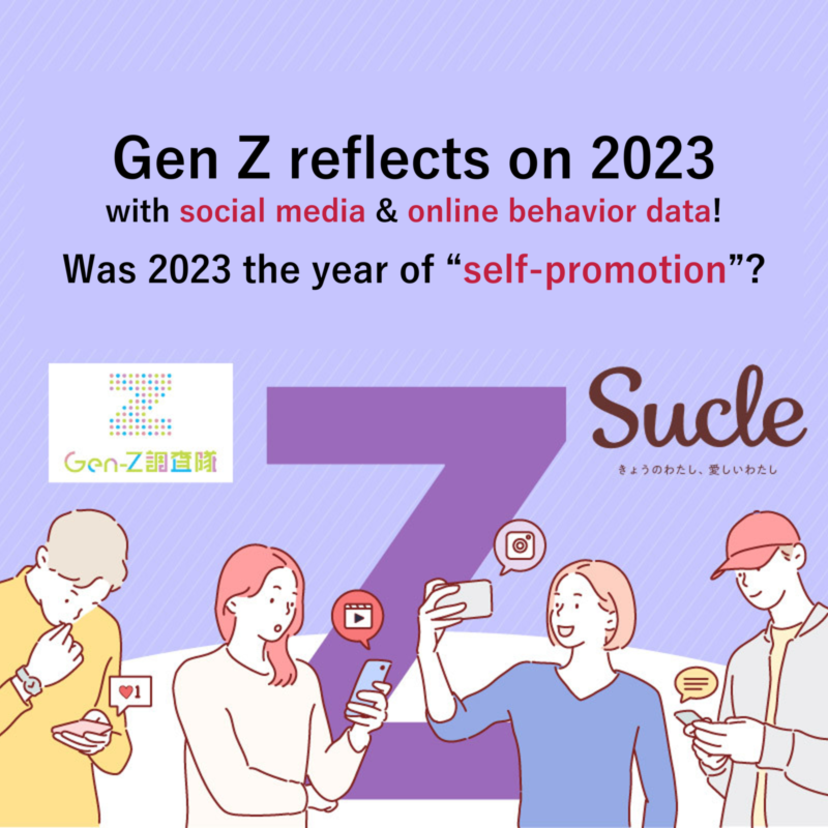
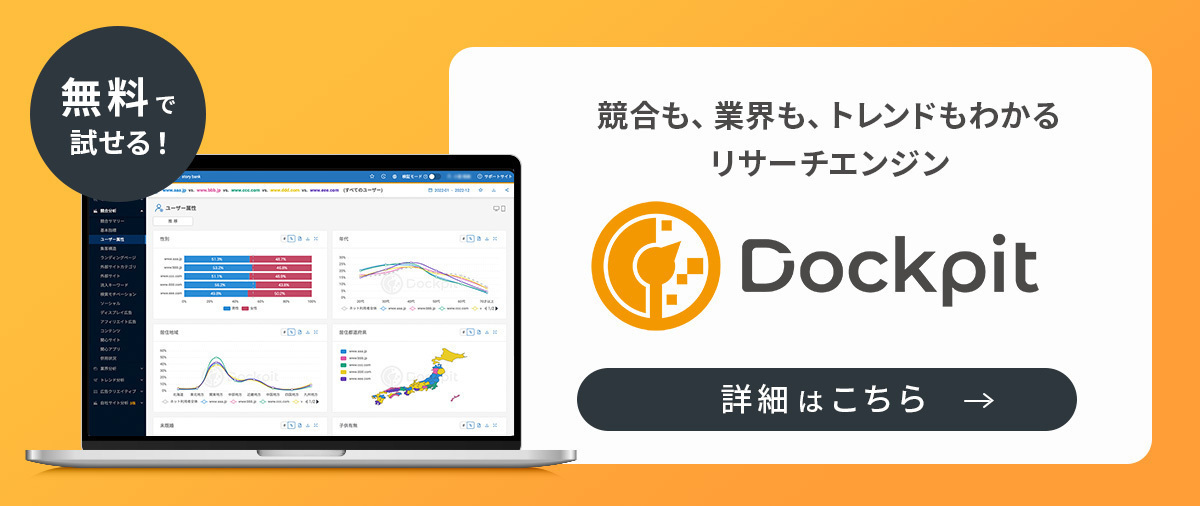


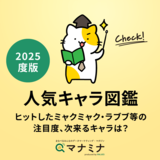


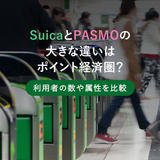










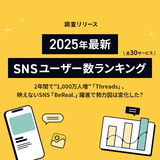



Born and raised in the Bay Area, U.S.A, I was fascinated by the different social and purchasing behaviors between Japanese and American consumers. I studied communication for undergrad and international marketing for my graduate studies. My professional background is in bilingual recruitment and Japanese-English translation.